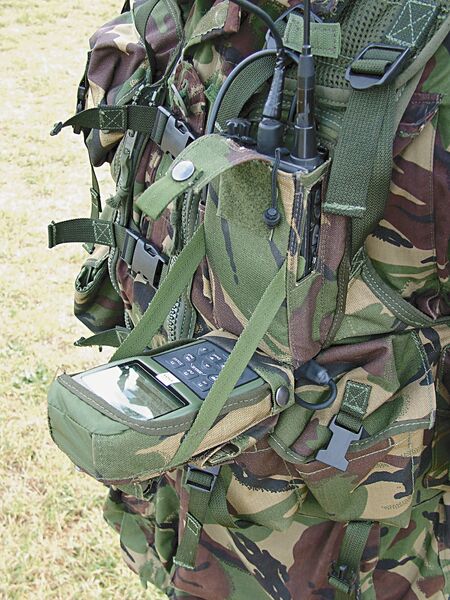
The DAGR-SA system on trial with the British Army in a drop-down hands-free harness configuration. BAE Systems is proposing its new NavGuide platform as a replacement to the legacy DAGR. (Rockwell Collins)
Programme officials at BAE Systems have unveiled their newest Assured-Positioning, Navigation, and Timing (A-PNT) end-user device featuring full integration of M-Code-enabled Global Positioning System (GPS) technology.
The NavGuide system is a portable, handheld A-PNT device designed to replace legacy Defense Advanced GPS Receiver (DAGR) systems, company officials said in a 13 June statement announcing the new system. The platform's end-user interface features a three-inch, full-colour screen for use during dismounted operations.
When fielded aboard tactical vehicles, the NavGuide's form factor matches that of the DAGR system, allowing vehicle crews to mount the new system using DAGR mounting points already in the vehicle, company officials said.
The M-Code GPS capability integrated into the NavGuide system provides increased signal strength and improved defence against signal jamming and spoofing, compared with legacy Selective Availability Anti-Spoofing Module (SAASM)-enabled GPS A-PNT systems, according to company officials.
“NavGuide also provides a moving map, situational awareness capabilities, [and] 9-line targeting” while meeting current military environmental requirements, Todd Peterson, director of engineering for Navigation & Sensor Systems at BAE Systems, said in the statement.
A majority of GPS capabilities for A-PNT aboard the US armed forces' weapon systems are based on SAASM-enabled GPS PNT. At its core, SAASM capabilities consist of an enhanced security architecture for GPS signal transmission, which is designed to encrypt and decipher signals via ‘over-the-air' rekeying of signal receivers.
Looking to read the full article?
Gain unlimited access to Janes news and more...







